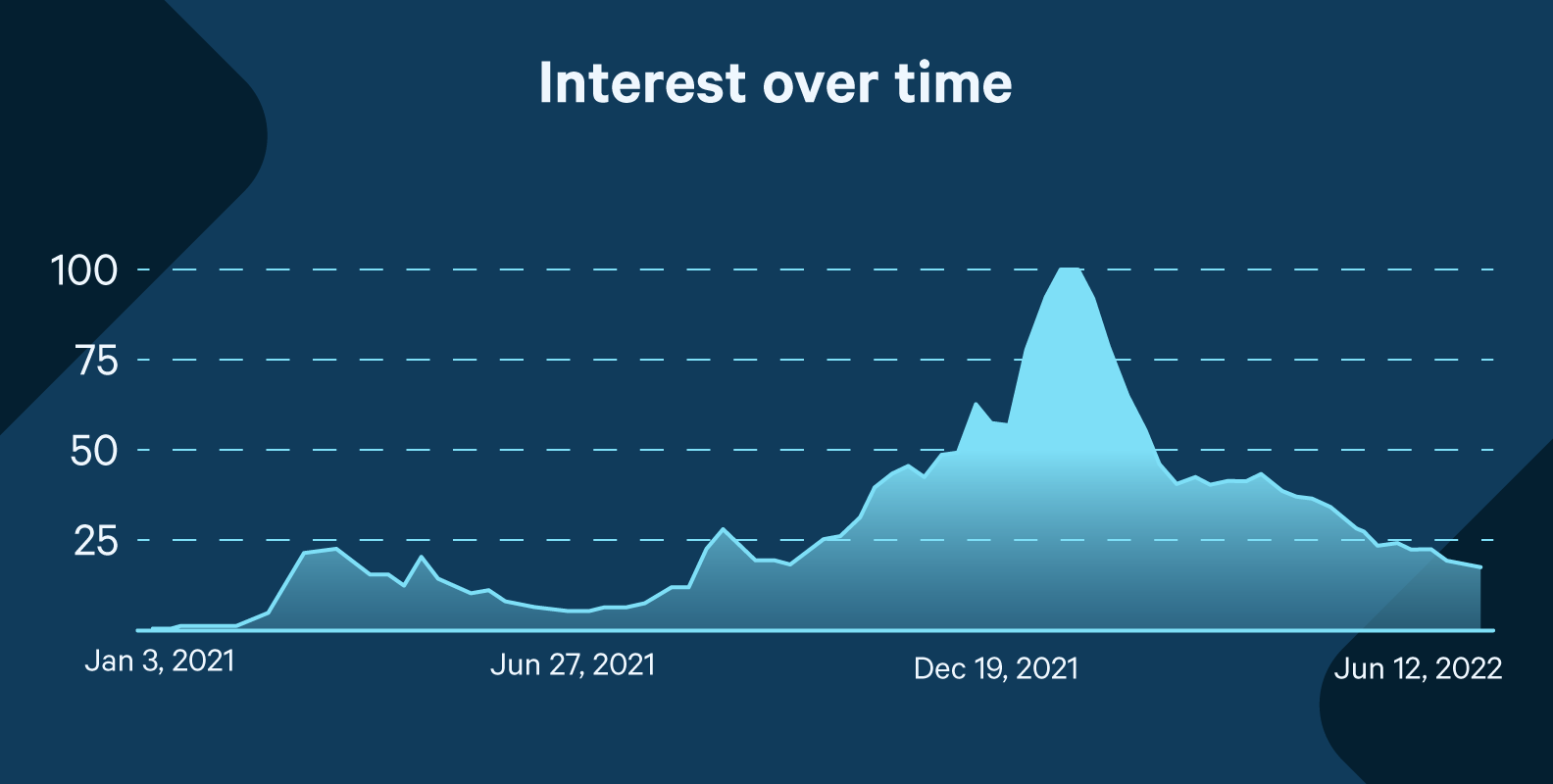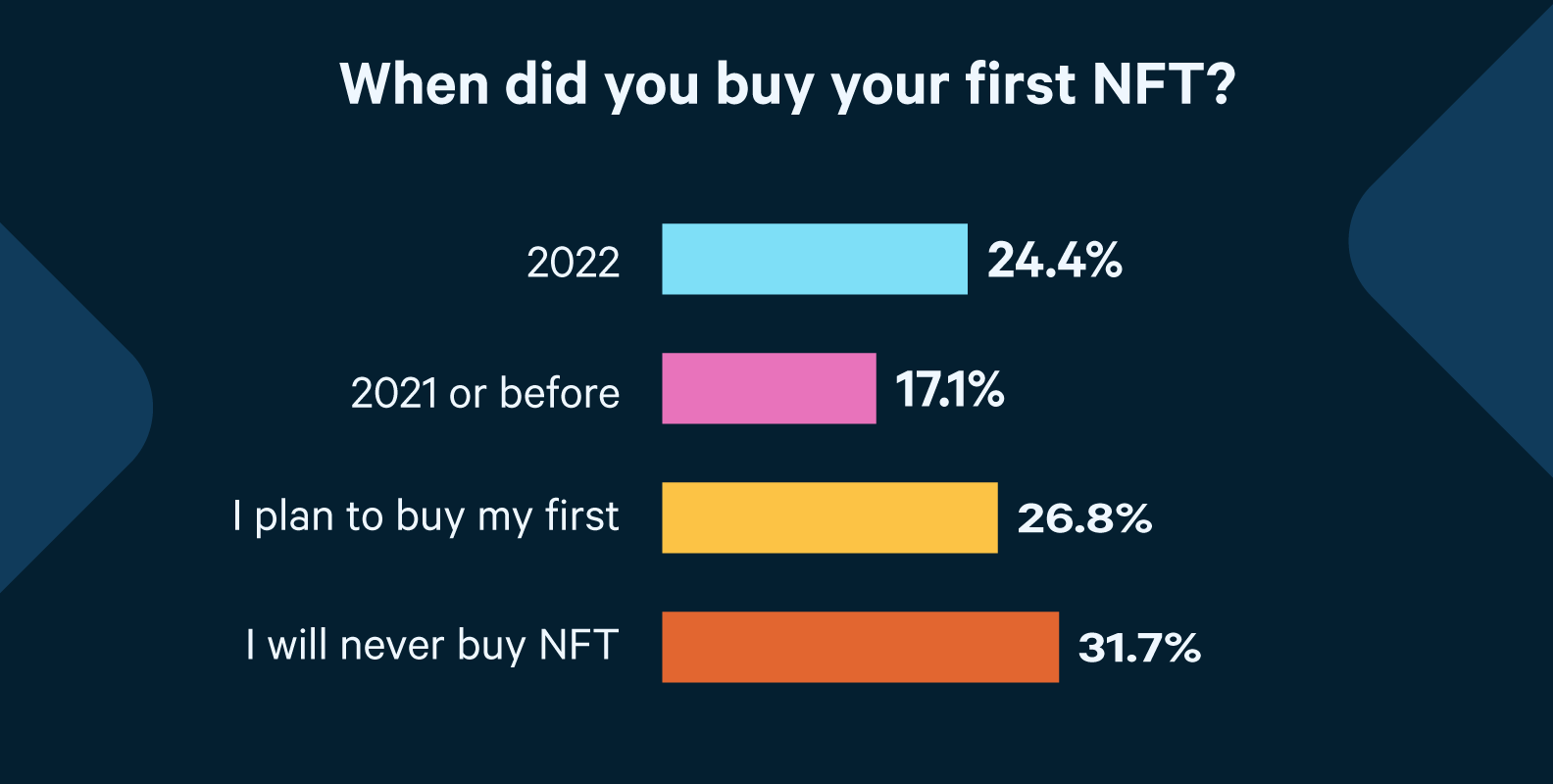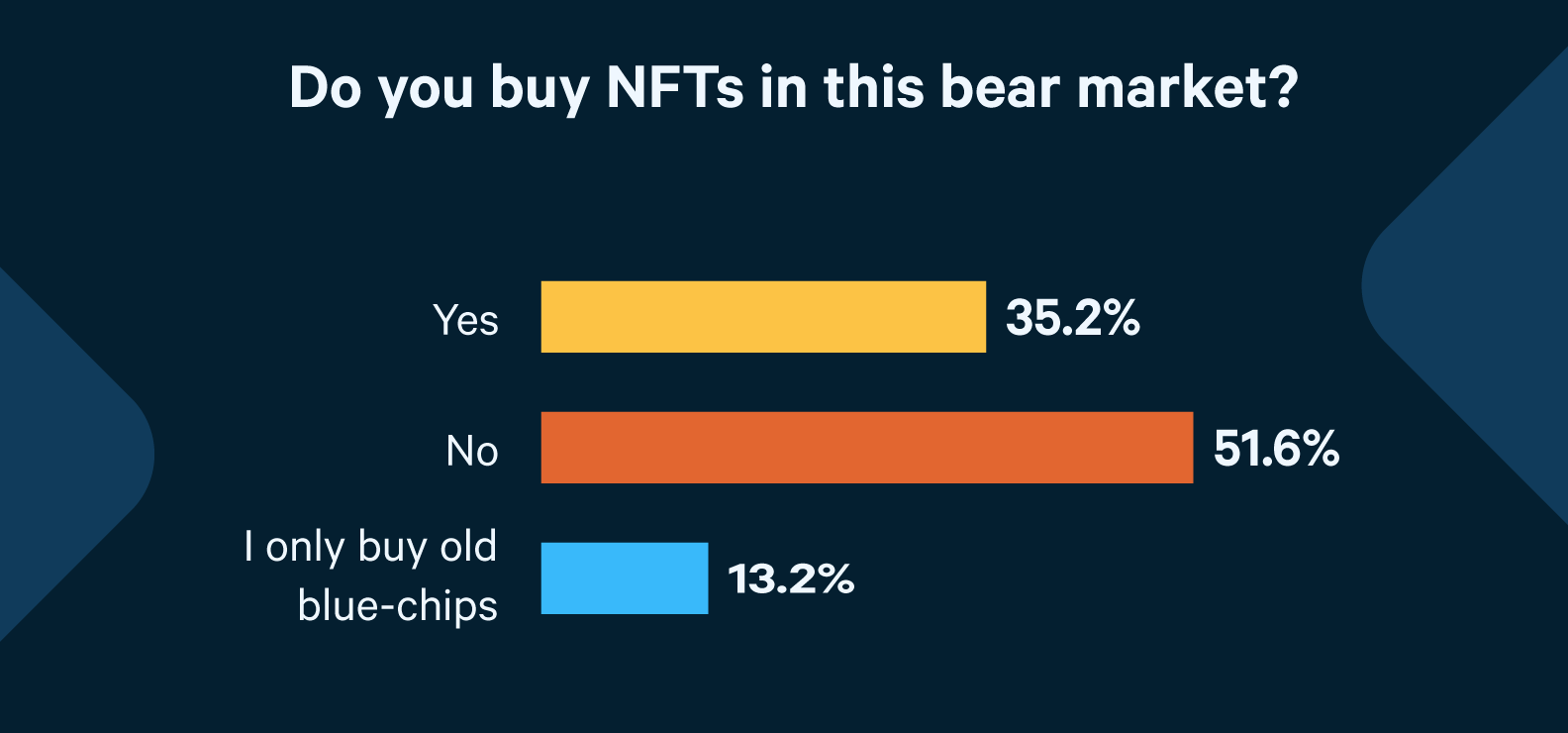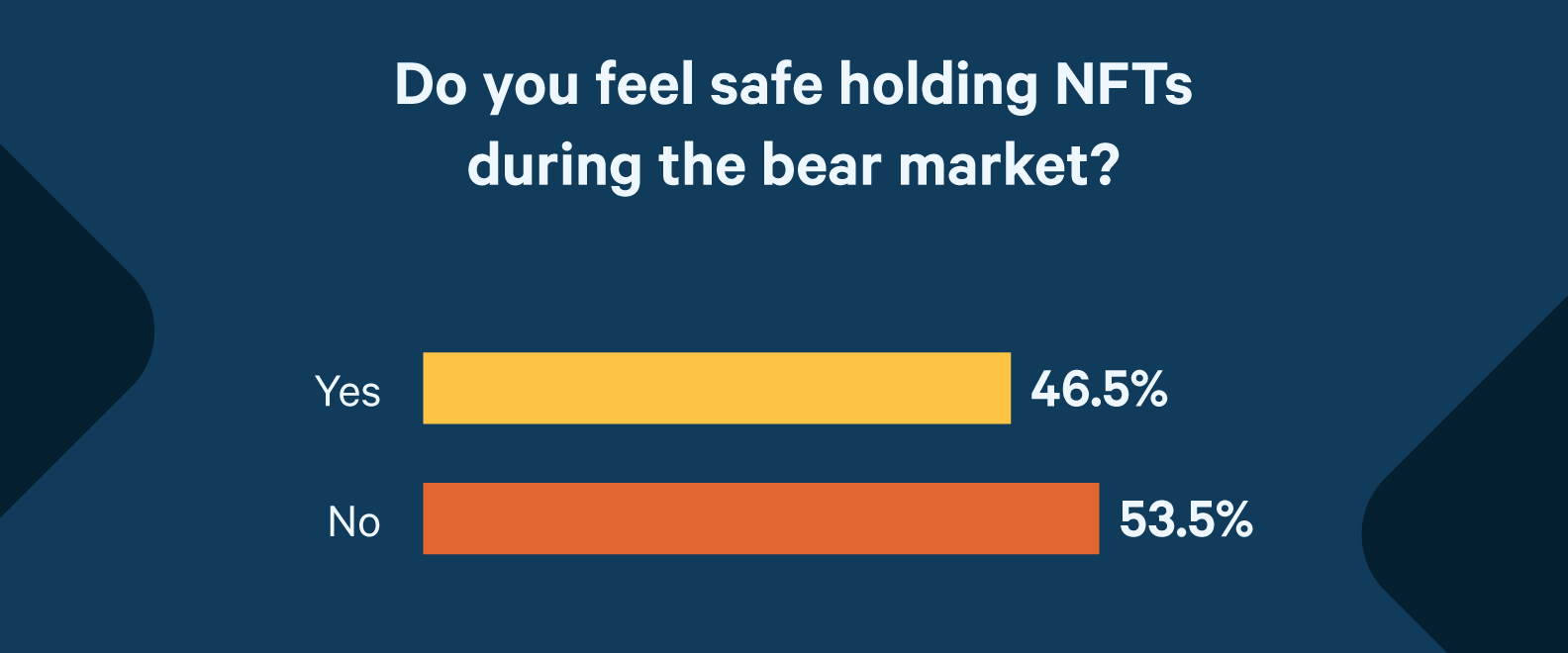The first NFT emerged in 2014, digital artist Kevin McCoy minted the NFT named ‘Quantum’. It was a pixelated octagon that changes color and pulsates.
At that time, the event only mattered in the small circles of people, as only the more sophisticated crypto enthusiasts knew what a non-fungible token was.
Fast forward to 2021, and headlines like “Beeple sold an NFT for $69 million”, ‘Covid Alien’ CryptoPunk NFT sells for over $11.7 million, “Steph Curry Buys $180,000 Bored Ape Yacht Club NFT” start popping up in the news outlets more and more often.
Unsurprisingly, the headlines attracted new people who join the world of non-fungible tokens. Search results show that 2021 was a year when search frequency of the term "NFT' was only going upwards.
If you want to know why people buy NFTs, check out this report revealing how much investors are willing to spend on an NFT, and whether or not they have made money since starting the NFT journey.

Regardless that 2021 was a great year for NFTs, we can't help but notice that people's curiosity faded in 2022, and they are not as interested in this new technology as they were a year ago.
Are NFTs dead?
To get more insight into where the NFT adoption is in July of 2022, DEXterlab carried out a survey running Twitter polls.
Results show that 17.1% of people bought their first NFT in 2021 or before. Despite that keyword "NFT" searches dropped significantly in 2022, results show that this year there were more first-timers that in 2021, as 24.4% of people said they bought their first NFT in 2022.
The findings also revealed how many people who never owned an NFT are willing to purchase their first one in the future. 26.8% of poll participants said they are planning to buy an NFT, but the crypto enthusiasts who decided they will never buy NFT are slightly higher – 31.7%.

Crypto community sentiment toward NFTs in a bear market
2022 has not been a good year for the global economy. High inflation put the FED in a position to apply strict policies to manage rising prices. Uncertainty brought fear into traditional markets, and stock prices keep plummeting affecting cryptocurrencies as both markets are closely correlated.
Generally, in this cycle named bear, people are exiting their positions as holding fiat currencies instead of a stock or a cryptocurrency is a safer option until confidence comes back into the macroeconomy.
DEXterlab continued the survey to glimpse into the NFT buyer sentiment in a bear market. When asked if they buy NFTs currently, only 35.2% of candidates answered yes. More than a half, 51.5% of those who voted in a poll, feel less optimistic. They are not spending money on NFTs.
A significantly lower amount of people are investing in higher-tier NFTs known as blue chips. Such items are generally NFTs of well-established collections like Bored Ape Yacht Club, Cryptopunks, DeGods, and many others. The blue-chip NFT prices can range from thousands of US dollars to hundreds of thousands.
Even though most blue-chip NFTs lost over 50% of their value in USD, only 13.2% of poll participants think that spending a significant amount of funds on blue-chip NFTs is an opportunity rather than a risk.

Going further, in the second poll aimed at finding out how likely are people to sell their NFT bags in these harsh market conditions, DEXterlab asked if people feel safe holding NFTs in the bear market.
The conviction among those who think NFTs are a relatively safe asset is pretty high; 46.5% are comfortable holding their NFT portfolio. Although fear dominates, 53.5% of poll participants feel unsafe owning NFTs.

What do the poll results tell us?
In the early adoption stages of new technology, it is common that many people feel sceptical and reject it if they can't clearly see what problems this new technology solves. When people saw the very first ads for a laptop computer, they were questioning the need of the new invention. Why would anyone need to carry their computer everywhere they go?
Perhaps NFTs are in the same stage of adoption curve and in the coming years we will continue seeing more and more people joining the NFT world. The fact, that more people bought their first NFT in 2022 as compared to 2021, despite that the search interest faded, supports the thesis that the adoption will continue to grow. On top of that, the significant amount of people feeling safe holding NFT when their prices are down also signals that they do think NFT bull market will come back and NFTs are not dead.